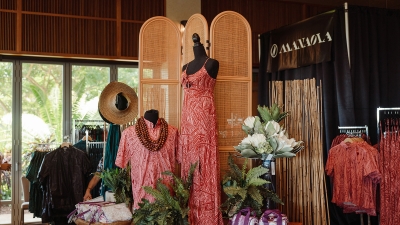Upcountry Ranching
Home to Four Seasons Resort Lanai and Four Seasons Resort Lanai, The Lodge at Koele, the island of Lanai is rich in contrasts, offering secluded sandy beaches, red rock fields and cool mountains yielding vistas, on a clear day, of neighbour islands. In the middle of Lanai is Koele – the lush, green upcountry. Koele is said to be named for the moisture-laden clouds that came down from the mountain gulches.
This rich grass-covered land was deemed perfect for ranching sheep, supplying Honolulu and other islands with mutton, and later cattle from around 1850 to 1951. By 1900, there were around 800 head of cattle on Lanai, and more than 20,000 sheep grazed the island. The herds of sheep and goats contributed to rapid deforestation and a significant decline in the native population of the island and slowly were phased out in favour of cattle and horses.
The Lanai Ranch operations were stationed out of Koele and included more than 30 residences, a store, offices, a one-room school house, and outlying buildings. It was to this setting that George C. Munro arrived. A professional ranch manager from New Zealand, Munro also had experience working in the Hawaiian Islands and brought an avid interest in science and nature along with knowledge of top management practices to Lanai. His focus was thus two-fold in that he managed the ranch operations and also integrated conservation initiatives into the work.
While living in the house, Munro discovered the importance of the clouds and fog seeping down from Lanai Hale, the highest point on Lanai, as a producer of valuable water in the form of “fog” drip moisture. Hearing the constant drip of water on his corrugated roof, Munro realised that the pine boughs collected water from the fog and clouds. As a result, he began planting Cook Island pines (Araucaria columnaris) across the island to restore the island’s watershed. It is estimated that the Cook Island pines planted along the summit of Lanai Hale generate enough fog drip to equal nearly 200 inches (500 centimetres) of rain on the mountain.
In 1922, lands were purchased by James Dole’s Hawaiian Pineapple Company, Ltd and the ranch boasted more than 5,000 head of cattle. The Hawaiian Pineapple Company (HAPCo.) maintained the Lanai Ranch operations and also cleared lands around the Palawai Basin and the city for cultivation of pineapple, for which the island would later become synonymous.
By 1951, only 2,500 cattle were left on the 47,000 acre (19,000 hectare) ranch, and the operations were closed to reduce the impacts of erosion on the island and focus on pineapple cultivation, thus ending 100 years of ranching on Lanai.
Today guests can enjoy a glimpse of that period with a visit to The Stables at Koele, offering horseback rides for all ages from wooded hills to the Paniolo trail and adrenalin-filled UTV drives across the ironwood forest and red dirt roads.



 @FourSeasonsPR
@FourSeasonsPR